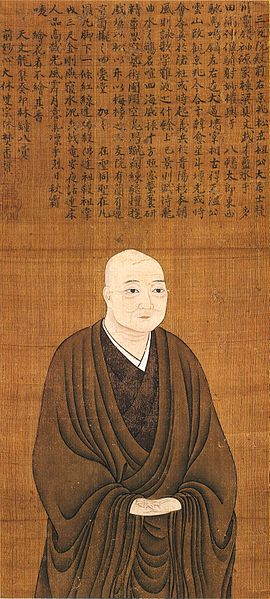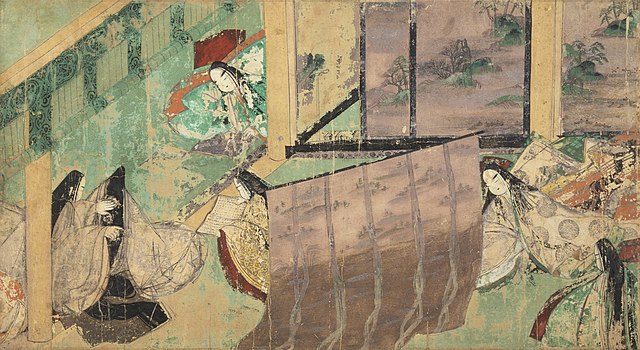Kanō Motonobu was a Japanese painter and calligrapher. He was a member of the Kanō school of painting. Through his political connections, patronage, organization, and influence he was able to make the Kanō school into what it is today. The system was responsible for the training of a great majority of painters throughout the Edo period (1603–1868). After his death, he was referred to as Kohōgen (古法眼).
White-robed Kannon, Bodhisattva of Compassion
Hosokawa Sumimoto on Horseback by Kanō Motonobu, Eisei Bunko Museum, 1507
Portrait of Hosokawa Takakuni by Kanō Motonobu, Tōrin-in, 1543
Birds and Flowers of the Four Seasons, 1513, 139x170 cm. Daisen-in, Daitoku-ji, Kyoto.
Japanese painting is one of the oldest and most highly refined of the Japanese visual arts, encompassing a wide variety of genres and styles. As with the history of Japanese arts in general, the long history of Japanese painting exhibits synthesis and competition between native Japanese aesthetics and the adaptation of imported ideas, mainly from Chinese painting, which was especially influential at a number of points; significant Western influence only comes from the 19th century onwards, beginning at the same time as Japanese art was influencing that of the West.
Set of sliding doors of Frolicking Birds in Plum and Willow Trees by Kanō Sansetsu, 1631, Important Cultural Property
Mural painting from the Takamatsuzuka Tomb. National Treasure.
Panel from The Tale of Genji handscroll (detail). National Treasure.
Siege of Sanjō Palace








